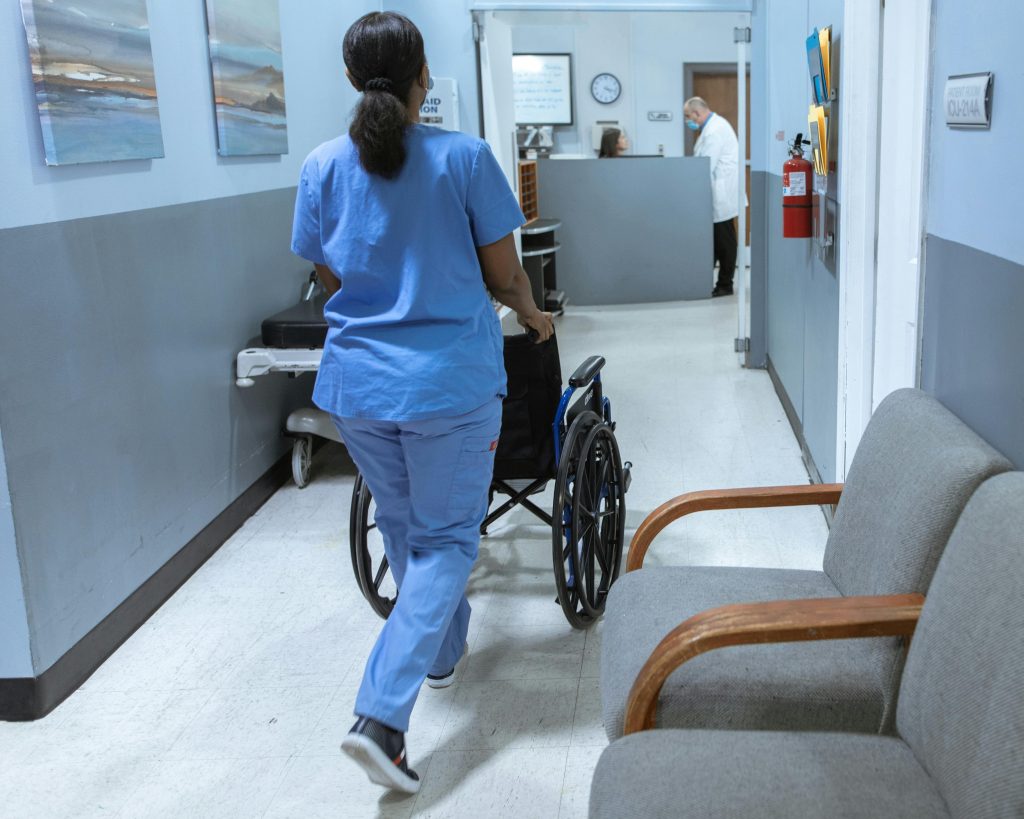Chapter 9: Transfer and Discharge Procedures
Transfer Routines
It is common for patients to be transferred from one unit in a hospital to another unit during their hospital stay. This usually occurs for one of two reasons: accommodation or medical/surgical.
- Accommodation
- This includes moves related to isolation, preferred accommodation requests, or consolidation of patients of the same gender. All patient transfers related to accommodation are initiated by the bed allocator and do not require a doctor’s order.
- Medical or surgical reasons
- A move to receive a type of care that the original unit is not able to provide. For example, a patient may be admitted to a general medicine floor with general abdominal pain NYD (not yet diagnosed). After some investigations, they are found to have a tumour requiring surgery. They would be transferred to the inpatient general surgery unit post-operatively to receive the appropriate surgical nursing care.
- All patient transfers related to care requirements require a doctor’s order. Patient safety with the level of care on their current floor is prioritized with any transfer orders, with the priority being on moving patients requiring more intensive care first.

The HUC’s Role in Transfers
The HUC’s role may change somewhat according to the specific processes of their hospital; however, below lists common activities associated with both sending and receiving patient transfers.
The sending HUC may do the following:
- Process physician’s order by adding pending transfer order onto the electronic bed board and/or notify the bed allocator.
- Prepare the patient physical chart for transfer (if using)–file any loose documents and place any old charts with the physical chart to ensure they remain together during travel.
- Ensure that all patient valuables, equipment from home (walkers, wheelchairs, etc.), medication, and personal belongings are assembled for transfer.
- Contact a porter/transfer attendant for patient transfer once the receiving unit has indicated that the bed is ready and the nursing report has been given.
- Remove all patient information from the communication board and notify the housekeeping department as necessary to clean the empty patient room.
- Notify MRP and family of patient transfer, as necessary.
The receiving HUC may do the following:
- Add the incoming transfer to the unit communication board, if using.
- Communicate with the sending unit when the patient’s room is clean and ready for transfer (electronically mark on the bed board or call the sending unit to notify).
- Transfer the patient to the unit in the clinical information system when they arrive at the unit. This will indicate to all hospital staff and departments that the patient is now located in the unit.
- If using a physical chart, relabel the exterior and review the Drs. Order section, in case there are outstanding orders that need to be completed.
- Update the clinical path or care plan as required.
- Add patient valuables to a locked drawer.
- Deliver any transferred medications to the med room.
Attributions
“Nurse Pushing a Wheelchair on Hospital Hallway” by RDNE Stock project; used under the Pexels license.
responsible for the placement, transfer, and discharge of all inpatients, emergency patients, and patient transfers according to priority and preferred accommodation status; often works closely with a RN (or patient flow manager) in their duties.

